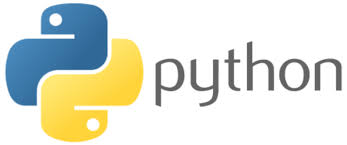CS 100

Scientific Computing
Activity 14 - Strings 🧶 and chars
- Create a file called
activity14.pyand save it to yourcs100/ch3folder. - At the top of the file, type
myCourse = "CS100 Scientific Computing". For the following questions, write code to check your answer, and write your answer in comments next to it.- What Python command will print the length of the variable
myCourse? - What is the following command printing?
print( myCourse[-9:-5]) - What is the following command printing?
print( myCourse[17:21]) - What is the following command printing?
print( myCourse[17] )? - What is the index of the first character
'S'inmyCourse, and what command do you use to find it? - What is the result of typing
print('100' in myCourse)? - What is the result of typing
print('130' not in myCourse)? - What is the result of typing
print('wow'*5)? - What is the result of typing
print( ('.'*3 + 'y')*3 )?
- What Python command will print the length of the variable
- Write code that concatenates
myCoursewith"Exam 1". - Write code that prints the
myCoursestring so that it is center justified and takes up 40 characters of space. Hint: use thecenterfunction. - Add code that assigns the string “fantastic” to the variable
f.- Use a for loop to print out each individual character of the string on a separate line.
- Use the slice operator on
fto print out the last 5 characters off. - Use the slice operator on
fto print out the substring ‘tastic’.
- Add the following lines of code. When you run the program, you will be prompted to type something in the shell. Type anything you would like in the shell, and then press enter. What is printed?
s = input('Type something here: ') # <-- do not change this part print(s)- Use the slice operator on
sto print only the first 5 characters from the string the user typed in. - Print the number of characters of
susing thelenfunction.
- Use the slice operator on
- Search Project Gutenberg for a book that you like. Choose to view the book as plain-text in your web browser. Highlight all text (Mac: cmd + A, Windows: ctrl + A) and copy it (Mac: cmd + C, Windows: ctrl + C). Back in Thonny, create a variable called
bookand assign it the string you copied. It’s a very long string, so we will use notation to start and end a multiline string ("""). For example:book = """ put all pasted text here .... it will span many lines all of this is still a string """ - Use string functions on the string variable
bookto answer the following questions. Print your results.- How often does the word ‘the’ occur? What about ‘science’?
- How often does the character ‘q’ occur? What about ‘s’?
- How many characters long is the book?
If you finish early
- Application in Biology! Write a function
countACGT(seq)that displays the number ofa,c,g, andtcharacters that occur in a DNA sequence. Call your function to test it with the string “aactTtgttAct”. For example, calling the functioncountACGT('aactTtgttAct')should display:No. of A: 3 No. of C: 2 No. of G: 1 No. of T: 6 Other letters: 0
How to submit
Submit your working activity14.py to Moodle.